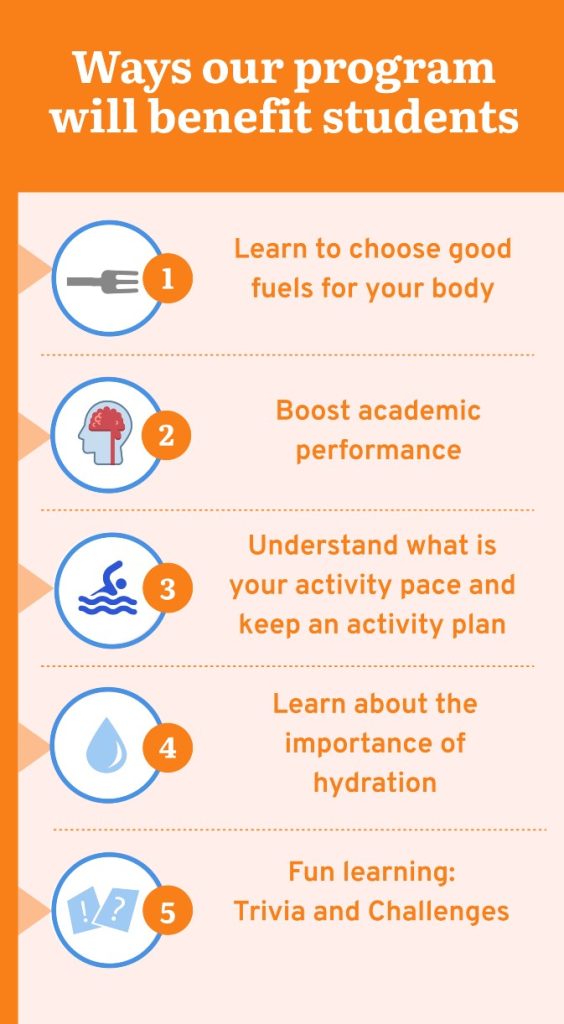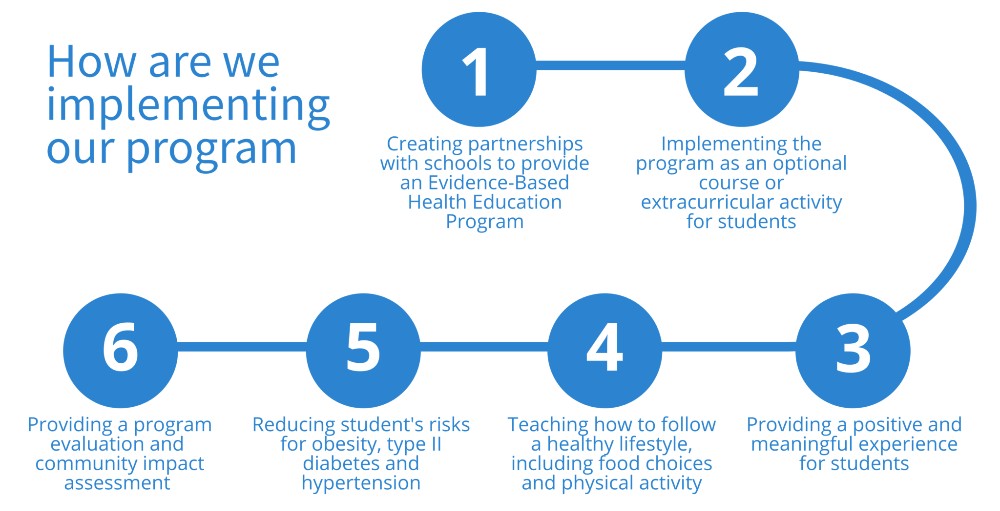Our school-based health and wellness education program is a valuable resource for improving student health outcomes:
Teach children to eat nutritious foods and consistently engage in physical activity to ensure they are:
Investing in early health and wellness intervention will positively contribute to the academic success of your school community while supporting the social-emotional development of your students.




Obesity
Obesity prevalence in children and adolescents aged 2-19 is 18.5%. Among 12 to 19 years old, obesity prevailed at 20.6%. Moreover, childhood obesity is more common among certain populations. Hispanic children had a prevalence of 25.8% and non-Hispanic Black children had a prevalence of 22.0%.
Inadequate Bone Health
Diet and physical activity are responsible for 10%-50% of bone mass and structure.
Iron Deficiency
Among females, the prevalence of iron deficiency is 9%. Children and adolescents who are overweight or obese are twice as likely to be iron deficient.
Eating Disorders:
In 2009, a national sample of high school students showed that 11% of students had gone without eating for more than 24 hours, 5% had taken diet pills, powders, or liquids without a physician’s advice, and 4% had vomited or taken laxatives to lose weight or to keep from gaining weight during the 30 days before the survey.
Cardiovascular Disease
Heart disease is the leading cause of death in the United States, and studies indicate that risk factors occur more frequently in obese children.
Cancer
Cancer is the second leading cause of death in the United States, and lifestyle-related risk factor play a major role in many types of cancer.
Diabetes
About one-third of American youth are overweight, which is a problem closely related to the increase in kids with type 2 diabetes.
During the last 3 decades, the prevalence of obesity has tripled among persons aged 6–19 years.
Obesity in children and adolescents is associated with numerous immediate health risks, including high blood pressure, high blood cholesterol levels, type 2 diabetes, metabolic syndrome, sleep disturbances, orthopedic problems, and social and psychological problems, such as discrimination and poor self-esteem.
The objective of this program is to help prevent obesity and promote physical activity and healthy eating.
The most effective strategy to achieve that goal is the implementation of an Evidence-Based Healthy Eating and Physical Activity Program.